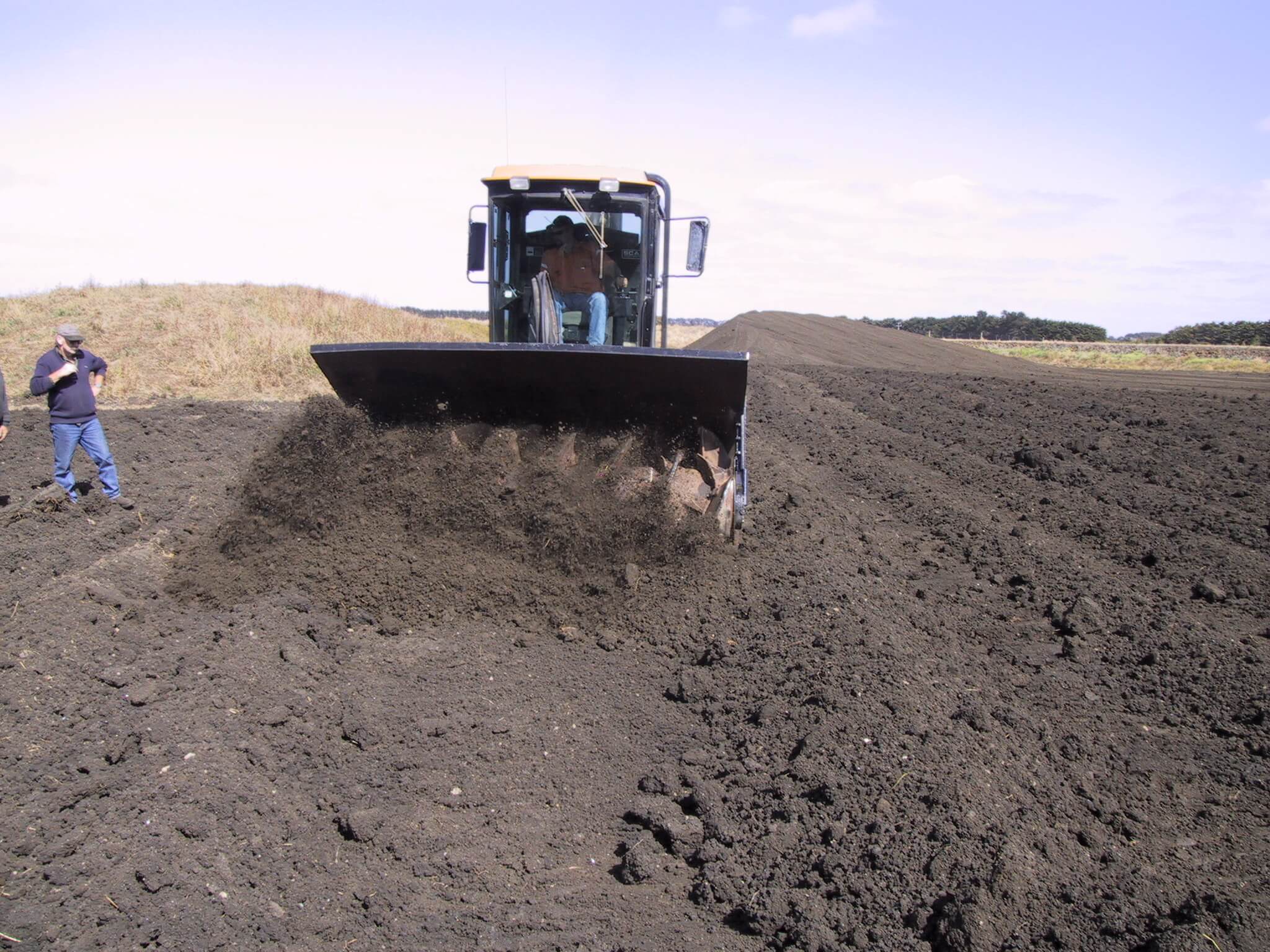Services Air Drying
Air-drying
Air-drying is a form of municipal sludge dewatering routinely practiced throughout Australia. The scale ranges from simple drying beds at small communities to large-scale highly mechanised operations servicing capital cities. The aim of any sludge drying process is to reduce the water content and generate a product that can be more economically transported, stockpiled and potentially beneficially reused.
The wetter the sludge is to start with, the more effort and expense it will take to produce the desired product. The drying process generates a significant sludge volume reduction as the product becomes dryer. For example, 1 tonne of dry solids @ 3% solids occupies approximately 34m3. The same 1 tonne of dry solids @ 20% occupies 5m3 and at 70% solids, it occupies approximately 1.1m3.
In its simplest form, the air drying operations normally consist of spreading the stabilised biosolids onto a drying pan to an average depth of 400mm. The biosolids are windrowed on a daily basis using Swamp Dozers, 4WD tractors or specialised sludge turners. This process is designed to remove and incorporate the thin crust that forms on the surface of the biosolids. The formation of the crust inhibits further drying by forming a natural insulation barrier across the surface. The regular incorporation of the crust both removes the insulation effect and exposes fresh biosolids to the drying properties of the sun and wind. The dried crust also aids in the solidification of the wetter biosolids by providing structural support for the formation of windrows.
Air-drying is dependent on extended periods of sunshine, wind, low humidity and very little rainfall during the drying period. Long periods of sunshine are essential but experience has shown that a stiff breeze will actually produce a better drying result when combined with mechanical aeration and windrowing.
The air-drying process is dependent on the mechanical manipulation of the biosolids for the sole purpose of accelerating the drying process by means of evaporation. Other tangible but secondary benefits of the air drying process include the following:
- Aeration of stockpiles and windrows from constant mechanical turning operations.
- Reduction and dissipation of odours due to the aeration and turning operations described above.
- Formation of a brown friable soil type product suitable for beneficial reuse.
- Production of a homogenous product that has consistent texture, appearance and moisture conten



